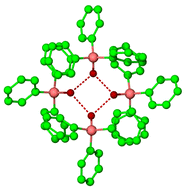Should solid-state molecular packing have to obey the rules of crystallographic symmetry?†
Abstract
About 8% of crystal structures contain more than one independent molecule or formula unit; the number being denoted by the parameter Z′. To most chemists and crystallographers such structures are nothing but a pain in the scientific rear! The crystallographer has to waste valuable data collection and computing power determining the structure of two or more often almost identical molecules, while the chemist writing a paper has to go to the trouble of making sure that “the second independent molecule does not differ significantly from the first”. With the advent of modern data collection and computational hardware these irritations have been to some extent ameliorated. Moreover, to a slowly growing body of ‘crystal chemists’ the interactions between crystallographically independent molecules represent a rich hunting ground for understanding solid state packing. Why should such structures form when nine times out of ten, crystallographic symmetry results in perfectly decent packing arrangements? Most importantly, can we learn something about the phase behaviour and materials properties of solids by understanding these special cases, perhaps with a view to using them in a predictive fashion? This survey sets out to collate existing data and interpretations on structures with high Z′ values as well as to highlight some interesting case studies and make some suggestions about future directions.

- This article is part of the themed collection: Molecular Crystal Engineering

 Please wait while we load your content...
Please wait while we load your content...